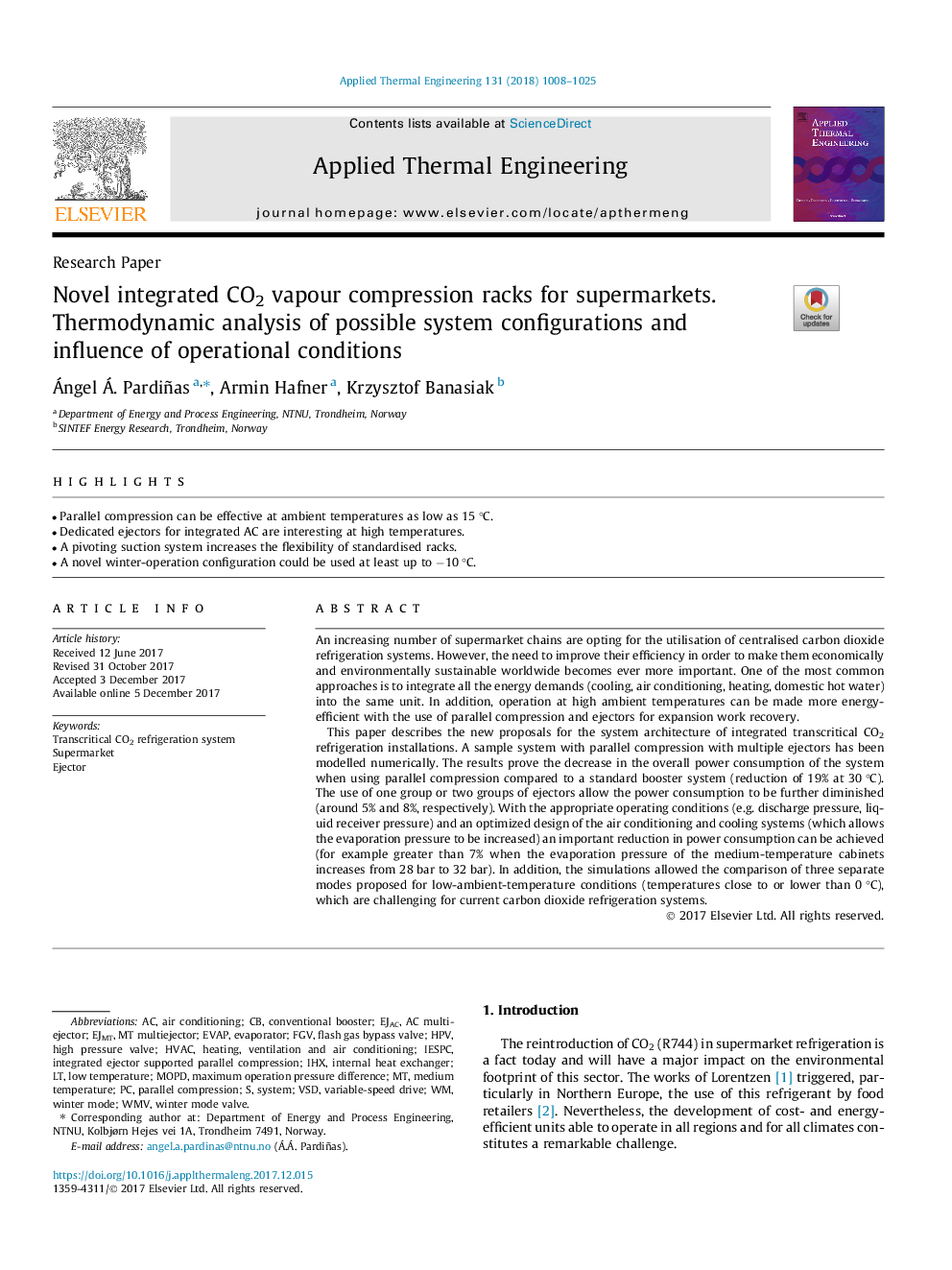| Article ID | Journal | Published Year | Pages | File Type |
|---|---|---|---|---|
| 7046306 | Applied Thermal Engineering | 2018 | 18 Pages |
Abstract
This paper describes the new proposals for the system architecture of integrated transcritical CO2 refrigeration installations. A sample system with parallel compression with multiple ejectors has been modelled numerically. The results prove the decrease in the overall power consumption of the system when using parallel compression compared to a standard booster system (reduction of 19% at 30â¯Â°C). The use of one group or two groups of ejectors allow the power consumption to be further diminished (around 5% and 8%, respectively). With the appropriate operating conditions (e.g. discharge pressure, liquid receiver pressure) and an optimized design of the air conditioning and cooling systems (which allows the evaporation pressure to be increased) an important reduction in power consumption can be achieved (for example greater than 7% when the evaporation pressure of the medium-temperature cabinets increases from 28â¯bar to 32â¯bar). In addition, the simulations allowed the comparison of three separate modes proposed for low-ambient-temperature conditions (temperatures close to or lower than 0â¯Â°C), which are challenging for current carbon dioxide refrigeration systems.
Keywords
Related Topics
Physical Sciences and Engineering
Chemical Engineering
Fluid Flow and Transfer Processes
Authors
Ángel Á. Pardiñas, Armin Hafner, Krzysztof Banasiak,
